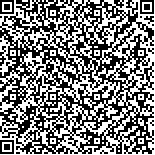张耀文,陈华玉,唐志明,等.数字化音频分析在吞咽障碍患者误吸风险评估中的应用[J].中华物理医学与康复杂志,2021,43(12):1065-1068
扫码阅读全文

|
| 数字化音频分析在吞咽障碍患者误吸风险评估中的应用 |
|
| |
| DOI:10.3760/cma.j.issn.0254-1424.2021.12.003 |
| 中文关键词: 吞咽障碍 误吸 数字化音频分析 |
| 英文关键词: Dysphagia Aspiration Digital acoustic analysis |
| 基金项目:国家自然科学基金面上项目(81472153);广州市科技计划项目(202007030001) |
|
| 摘要点击次数: 5378 |
| 全文下载次数: 6867 |
| 中文摘要: |
| 目的 基于Praat语音分析软件探讨声学数字化分析方法在吞咽障碍患者的误吸风险评估中的应用。 方法 选取46例脑卒中吞咽障碍患者,每例患者均进行标准化的吞咽造影检查,要求每例患者在进食每口食物前、后分别发“衣/i/”音3次,采集声音样本。根据渗漏-误吸分级(PAS)将所有患者分成非误吸组(16例)和误吸组(30例),检测和比较2组患者进食前和进食后的组内及组间嗓音的基频、相对平均扰动度(RAP)、相对频率微扰(Jitter)、相对振幅微扰(Shimmer)、振幅微扰商(APQ)和谐波噪声比(HNR)等声学参数的变化情况。 结果 非误吸组患者的各项声学参数指标进食前后比较,数据差异均无统计学意义(P>0.05);误吸组患者的基频、RAP和Jitter数据进食前后差异有统计学意义(P<0.01)。进食前,非误吸组患者的RAP[(0.31±0.22)%]和Jitter[(0.49±0.32)%]分别与误吸组的RAP[(1.02±0.53)%]和Jitter[(1.71±0.84)%]比较,组间差异有统计学意义(P<0.01),且非误吸组优于误吸组;进食后,仅Jitter值[非误吸组(0.49±0.32)%;误吸组(0.74±0.43)%]的组间差异有统计学意义(P=0.048)。 结论 可在进食评估前,通过对声学参数RAP和Jitter的分析,识别吞咽障碍患者误吸的风险。 |
| 英文摘要: |
| Objective To explore the application of digital acoustic analysis in assessing the risk of aspiration among persons with dysphagia using the Praat speech analysis software. Methods The swallowing of 46 stroke survivors with dysphagia was studied using video fluoroscopy. Each patient was required to pronounce "yi/i/" 3 times before and after taking each mouthful of food, and their voice samples were collected. The subjects were divided into a non-aspiration group of 16 and an aspiration group of 30 based on their penetration-aspiration scale scores. Fundamental frequency, relative average perturbation (RAP), jitter, shimmer, amplitude perturbation quotient and harmonic-to-noise ratio were compared between the two groups before and after taking food. Results For the non-aspiration group, there was no significant difference in the acoustic data before and after eating. For the aspiration group there were significant differences in fundamental frequency, relative average perturbation and jitter before and after taking food. The average RAP and jitter of the non-aspiration group were significantly better than the aspiration group′s averages before eating. After eating, however, significant differences were observed only in average jitter. Conclusions Analyzing perturbation and jitter can help to identify persons at risk of aspiration. |
|
查看全文
查看/发表评论 下载PDF阅读器 |
| 关闭 |